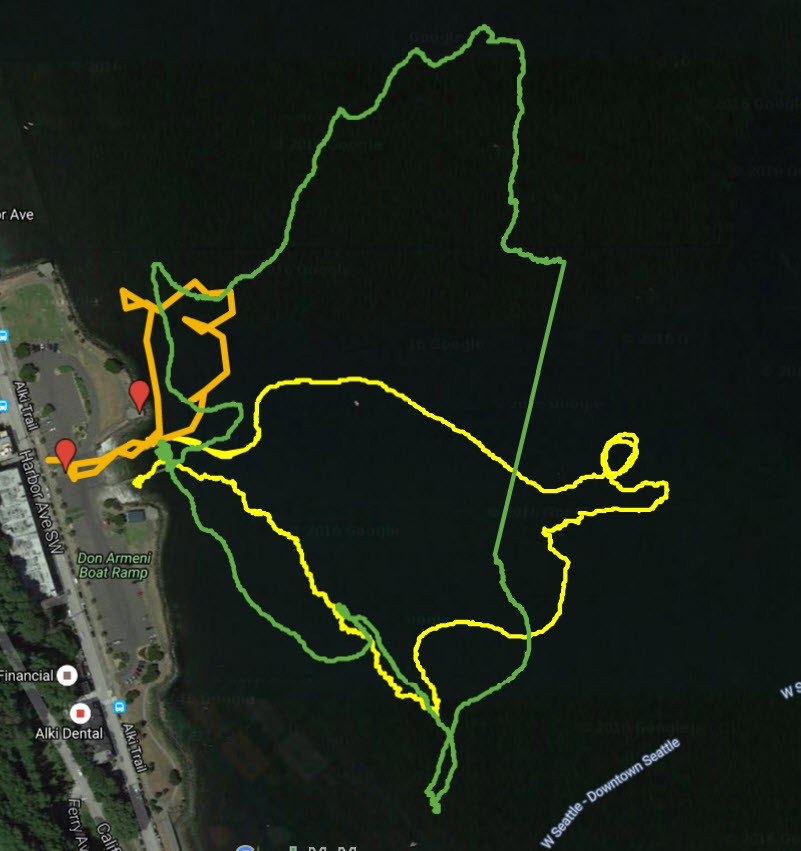We got back in the water on July 24th, and it was our best test yet. We got the boat steering straight and we got enough data to figure out a speed/current draw comparison which will enable us to plan longer missions. We even returned to the dock under power! You can see all of our tests at Don Armeni overlaid here:

The green line is our latest test. I marked our old shore station site and our new one out on the point. However, we consistently lost our ship to shore link at a bit less than a quarter of a mile and had to be towed back into range by the safety boat. This isn't really enough for any of the serious testing we want to do, so it's time to rework things.
Our current electronics are getting a bit long in the tooth, and it's becoming increasingly clear that having both the Arduino and the Beaglebone is making things more complex than they have to be. Therefore, we've redesigned a pure-BBB version of the hardware, and we're starting to rework the software to match it. You can see our work to date on our new hardware branch.
Beyond the deletion of the Arduino, there are two other major architectural changes. First, we're modifying the boat to call a control server that serves out the interface rather than serving the interface itself. The biggest benefit of this is that we don't have to figure out how to set up a cell phone or satellite link to run a local server. The boat can then phone in on a schedule. This gets us much closer to an architecture suitable for open ocean work. In the short term, this means we can use a portable cell hotspot for our ship to shore work.
Second, we're going to use COTS R/C gear for our in-shore control work rather than the long-range communications. Many modern R/C controllers support something called S.BUS, which transmits the control signals from the receiver as a serial stream (at 100 kbps 8E2, just to be weird) instead of as a series of separate PWM signals. This makes the interface that much easier. The Turnigy 9XR Pro plus an S.BUUS compatible transmitter/receiver pair plus a battery cost only $140, and the software is open to boot, so this should work well for us.
In addition, we're planning to store waypoints and paths directly in KML format and maintain them using Github. This has the added advantage of providing a tamper-evident record of our location and waypoints, which is good for autonomous sailing competitions. There's a pile of stuff to implement for the new hardware, and we could really use some help writing unit tests and implementing various classes. If you are interested, take a look at the unimplemented headers in our new hardware branch and grab one to implement.
Discussions
Become a Hackaday.io Member
Create an account to leave a comment. Already have an account? Log In.